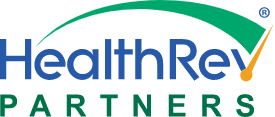
What is the importance of accuracy in home health coding and OASIS and how does that impact outcomes and star ratings?
Accuracy in home health coding and OASIS are extremely important as there are many factors that are impacted by how a record is coded and how the OASIS items are scored.
One common misconception is that if it doesn’t impact reimbursement then it’s not that important. Accuracy impacts many factors in addition to reimbursement, such as outcomes and star ratings. Care Compare, formerly known as Home Health Compare, offers the public insight on how well a home health agency is doing compared to other agencies in that area.
A coder must pay attention to all the OASIS items, not just those functional items that fall under PDGM. Many of the other OASIS items that may not be PDGM, serve to help to support those functional responses. For example, if a patient is having daily pain which limits their ability to dress, that impacts M1810 and M1820.
Some key OASIS items that do not fall under PDGM but must support the functional impairment are: M1242 (frequency of pain interfering with activity), M1400 (dyspnea), M1700 (cognitive function), M1710 (when confused/report or observed with the last 14 days), M2020 (oral medication management) and M2030 (injectable med management). When a patient has increased pain, dyspnea, or cognitive issues, all those things should be considered when answering the M1800s.
The clinician should always observe and avoid interview when it comes to the patient’s performance. As a field clinician, we all know that many patients do a lot of things they shouldn’t do. So, it’s up to the clinician to report what a patient can do safely and not necessarily how they complete the task. They must ask themselves, is the patient safe doing it this way and if they aren’t, then you must score the OASIS based on safety.
Another factor to consider when scoring the OASIS is the intent of the item. This will help the clinician and reviewer to better understand how to answer each item appropriately. You will find in Chapter 3 of the OASIS Manual that ability can be temporarily or permanently limited by: physical limitations, emotional/cognitive/behavioral impairments, sensory impairments, and environmental barriers. Once the OASIS is complete and coded, all these things should paint a clear picture of the patient and what their status is as well as their needs and goals.
The items that make up a star rating should be carefully reviewed to ensure accuracy. The 7 measures are:
- Timely Initiation of Care (process measure) – M0104
- Improvement in Ambulation (outcome measure) – M1860
- Improvement in Bed Transferring (outcome measure) – M1850
- Improvement in Bathing (outcome measure) – M1830
- Improvement in Shortness of Breath (outcome measure) – M1400
- Improvement in Management of Oral Medications (outcome measure) – M2020
- Acute Care Hospitalization (claims-based) (outcome measure)
Under PDGM, coding must be precise and supported by physician documentation. The coder depends on the agency to provide them with all medical records available, including F2F (face to face), as well as clear clinical documentation to ensure coding accuracy and specificity. Having this information up front for the coder will not only decrease the risk of claim denial, but also increase turnaround time of the chart.
So as you can see coding and OASIS accuracy is critical to ensure appropriate reimbursement, positive outcomes and high star ratings.


